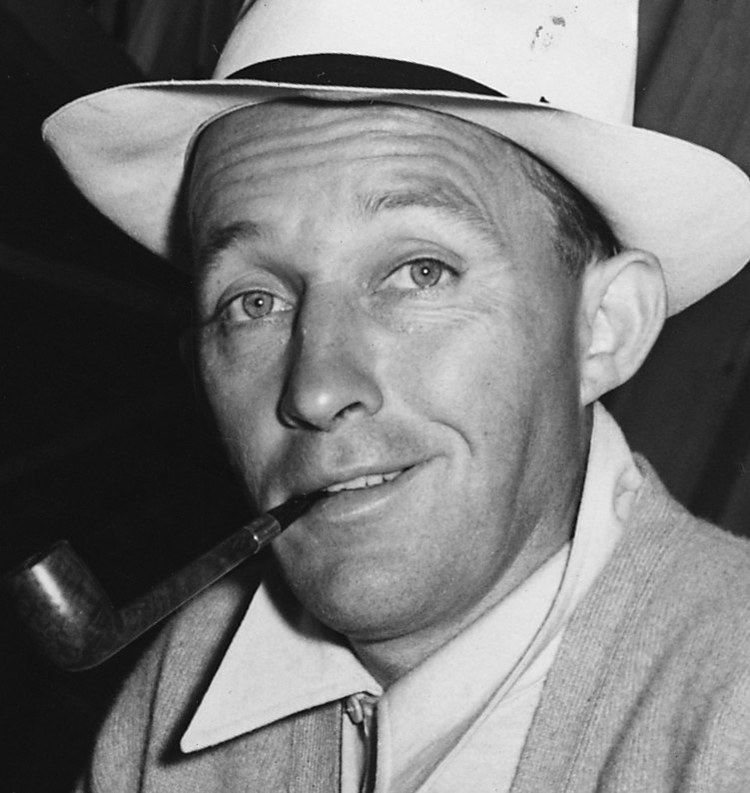 | ||
Hipster or hepcat, as used in the 1940s, referred to aficionados of jazz, in particular bebop, which became popular in the early 1940s. The hipster adopted the lifestyle of the jazz musician, including some or all of the following: dress, slang, use of cannabis and other drugs, relaxed attitude, sarcastic humor, self-imposed poverty and relaxed sexual codes.
Contents
History
The words hep and hip are of uncertain origin, with numerous competing theories being proposed. In the early days of jazz, musicians were using the hep variant to describe anybody who was "in the know" about an emerging culture, mostly black, which revolved around jazz. They and their fans were known as hepcats. By the late 1930s, with the rise of swing, hip rose in popularity among jazz musicians, to replace hep. Clarinetist Artie Shaw described singer Bing Crosby as "the first hip white person born in the United States."
In 1939, the word hepster was used by Cab Calloway in the title of his Hepster's Dictionary, which defines hep cat as "a guy who knows all the answers, understands jive". In 1944, pianist Harry Gibson modified this to hipster in his short glossary "For Characters Who Don't Dig Jive Talk", published in 1944 with the album Boogie Woogie In Blue, featuring the self-titled hit "Handsome Harry the Hipster". The entry for hipsters defined them as "characters who like hot jazz."
Hipsters were more interested in bebop and "hot" jazz than they were in swing, which by the late 1940s was becoming old-fashioned and watered down by "squares" like Lawrence Welk, Guy Lombardo and Robert Coates. In the 1940s, white youth began to frequent African-American communities for their music and dance. These first youths diverged from the mainstream due to their new philosophies of racial diversity and their exploratory sexual nature and drug habits. The drug of choice was marijuana, many hipster slang terms were dedicated to the substance.
In his book Jazz: A History (1977), Frank Tirro defines the 1940s hipster:
To the hipster, Bird was a living justification of their philosophy. The hipster is an underground man. He is to the Second World War what the dadaist was to the first. He is amoral, anarchistic, gentle, and overcivilized to the point of decadence. He is always ten steps ahead of the game because of his awareness, an example of which might be meeting a girl and rejecting her, because he knows they will date, hold hands, kiss, neck, pet, fornicate, perhaps marry, divorce—so why start the whole thing? He knows the hypocrisy of bureaucracy, the hatred implicit in religions—so what values are left for him?—except to go through life avoiding pain, keep his emotions in check, and after that, "be cool," and look for kicks. He is looking for something that transcends all this bullshit and finds it in jazz.
Marty Jezer, in The Dark Ages: Life in the United States 1945–1960 (1999), provides another definition:
The hipster world that Kerouac and Ginsberg drifted in and out of from the mid-1940s to the early-1950s was an amorphous movement without ideology, more a pose than an attitude; a way of "being" without attempting to explain why. Hipsters themselves were not about to supply explanations. Their language, limited as it was, was sufficiently obscure to defy translation into everyday speech. Their rejection of the commonplace was so complete that they could barely acknowledge reality. The measure of their withdrawal was their distrust of language. A word like cool could mean any of a number of contradictory things—its definition came not from the meaning of the word but from the emotion behind it and the accompanying non-verbal facial or body expressions. When hipsters did put together a coherent sentence, it was always prefaced with the word like as if to state at the onset that what would follow was probably an illusion. There was neither a future nor a past, only a present that existed on the existential wings of sound. A Charlie Parker bebop solo—that was the truth.
In Lennie Tristano's view, the hipsters' relation to bebop was anything but positive: "the supercilious attitude and lack of originality of the young hipsters constitute no less a menace to the existence of bebop."
Racial roles
The new philosophy of racial role reversal was transcribed by many popular hipster authors of the time. Norman Mailer's 1957 pamphlet, entitled "The White Negro", has become the paradigmatic example of hipster ideology. Mailer describes hipsters as individuals "with a middle-class background (who) attempt to put down their whiteness and adopt what they believe is the carefree, spontaneous, cool lifestyle of Negro hipsters: their manner of speaking and language, their use of milder narcotics, their appreciation of jazz and the blues, and their supposed concern with the good orgasm." In a nod to Mailer's discussion of hipsterism, the United States' Cold War deployments of African American culture and personalities for the purposes of public diplomacy has been discussed as "hipster diplomacy".
Sexual roles
Some scholars, such as Eric Lott, describe this new philosophy as based on "the twentieth century reinvention of ... homosocial and homosexual fascinations."
A complex pattern of sexual relations emerged among the men—which, in a rather self-consciously literary fashion, they sometimes regarded as resembling the affair of Rimbaud and Verlaine. Like Rimbaud, they endorsed "the systematic derangement of the senses"—through intoxicants, meditation, and other forms of intense experience ("kicks")—as a means to reach states of expanded awareness.
